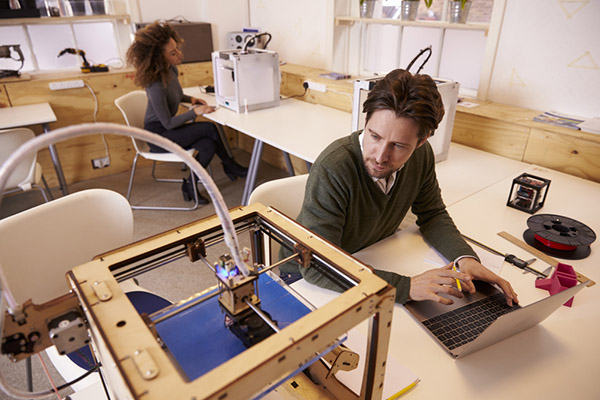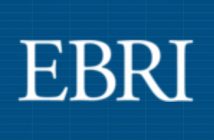A prototype, in simpler terms, refers to the model or mold that serves as the foundation copy of products that are going to be produced in multiple quantities. This is an integral part of any design and engineering process.
Although useful, the manufacturing industry has seen challenges relating to the traditional means of prototyping. Consistency can sometimes be altered, the quality isn’t uniform, and the costs can spike up. Hence, the creation of other more refined means of prototyping that benefits all forms of businesses today.
One of these newer forms of prototyping is rapid prototyping. This refers to the process of using a more extensive range of techniques to fabricate a 3D scale model of a particular part of a product that has to be produced. In contrast with the more traditional means of prototyping, this is a quicker and more efficient method.
Learn more about rapid prototyping and some of its benefits for your business by reading through below.
Processes Employed In Rapid Prototyping

Depending on the products that you’re trying to create through the models, the processes are going to be varied. What’s the right method to use is also dependent on the result that you’re trying to achieve.
Through rapid prototyping services, you’re able to choose from any of the common rapid prototyping processes, like the following:
- Digital Light Processing (DLP). This refers to the process of reflecting light and color to a screen. This is achieved through the use of micromirrors.
- Stereolithography (SLA). This refers to the process of creating patterns in your prototype by penetrating layer after layer. This is a type of 3D printing.
- Multi-Jet Modelling (MJM). This refers to the process of rapid prototyping that creates a plastic model directly through the 3D CAD data. This is effectively useful for high-detail concept models and casts.
- Selective Laser Sintering (SLS). This refers to the process of using a laser to sinter powdered material to define a 3D model. Through the laser, the material is bound to form the solid cast or prototype.
While these terms are highly technical, the point is that rapid prototyping can achieve various processes. This is aimed at creating better and more refined prototypes for the creation of your final products.
Learn more about these processes by consulting experts in prototyping from PrototechAsia.com.
Benefits of Rapid Prototyping
Now that the different processes are already presented, it’s time to get to know the benefits of rapid prototyping for your business:
- More Concepts Are Explored
With the demand for more forms of products and services also came the challenge for manufacturers to come up with more prototype concepts. The manufacturing industry has to keep up with this if they want to stay relevant in the business competition.
With rapid prototyping, more concepts are explored. This means that what may have previously been thought of as impossible to achieve is now doable. Hence, manufacturers can now present you with more design concepts than what was previously the case before.
Note that the basis of rapid prototyping stems from the broader range of techniques that it can now employ. Hence, its limitations are somewhat changed into positive possibilities to have better and more design concepts. With this comes the ability of more and fresher molds and ideas to be presented to clients. In effect, your business is also able to introduce newer and fresher designs and products to your customers.
- Repeated Designs Can Be Applied
When you’re creating molds and prototypes, it isn’t always the case that you’re going to keep changing designs. While more design concepts should be explored, there are also some constant designs in your business that become a regularly demanded product by your loyal patrons. Hence, the need to apply repeated prototype and mold designs.
When you’re going to apply repeated prototype and mold designs, it’s very inefficient if your manufacturing team has to go back to square one by creating these designs. For instance, perhaps the prototype or mold created in the traditional means of creation wasn’t strong enough to withstand repeated production.
With rapid prototyping, this problem is adequately addressed. Apart from repeated designs, it also becomes easier to incorporate minute corrections or alterations in the prototype to come up with a more refined and better version of your product.
- Changes Can Be Applied Instantly
When you apply the services of a rapid prototype business, before the mass manufacturing process is done, the prototype is presented to you. Through this prototype, you’re able to ascertain as to what may be wrong with the model.
Before mass-producing the final products, changes can be applied instantly. This ensures that the products that you present to the public are already better and a well-inspected quality. Any changes and iterations have already been made, which is based on the overall feedback of your team.
Through the prototype, concepts are also better communicated. The process of rapid prototyping is reliant on images and concepts from a flat and 2D visual. From here, it’s then applied to the hands-on products or prototypes that you get to see first, change, alter, or correct, before going to the final stage of mass production.
- Product Testing Is Possible
How can you go through a better quality control process if your products don’t go through a prototype that you first test out? For you to have the best results of your products, you need to be able to test and refine the model first.
Through the prototype, you’re ready to minimize design flaws. This ability to test the product, through its prototype early on eliminates the possible costly defects that you might discover only later on. Without the prototype, how are you even able to test out the product, to begin with?
It has to be more than just looking at detailed photos of the product. You’ll also have to be able to touch, feel, and even use the product itself.
- Saves Time And Money
With rapid prototyping, you get to save more time and money for your business. Different setups are no longer necessary. With the application of various techniques in technology, you can produce numerous prototypes that are made of different raw materials. Hence, right there and then, you’re able to compare prototypes from various materials, as to which you feel will best suit your preferences for the final product itself.
Also, through rapid prototyping, time and money are saved because errors are minimized. As aptly mentioned earlier in this article, early on that stage of production, you’re already able to make necessary corrections in your prototype. This saves you from costly regrets later on, which may already be more difficult for you to correct and revise.
Apart from the money itself, you’re also more efficient with your time. The creation of prototypes is no longer as time-consuming as it used to be. Because this is now a faster process, just because you’re creating a prototype, it doesn’t mean that you’re delaying any of your production processes. In fact, you’re speeding it up in the long run. The reduction of mistakes in your products also saves you precious time from redoing it all over again.
In totality, through rapid prototyping services, your business can operate more efficiently and productively even early on the manufacturing and production phase.
- Customization Of Designs Is Now Possible
Apart from the ability to explore more concepts, through rapid prototyping, you’re also able to customize designs more effortlessly. This customization means that for a particular design concept, you’re ready to key in any customization needs that you desire for your products. For a specific idea, you’re able to apply any individual preference or requirement that you may desire. No special tool is needed.
Through technology, rapid prototyping techniques are also now automated. This means that changes in the CAD model are all that’s needed to be done to make changes in the prototype. The process stays the same.
- Versatility Is Offered
Another advantage of rapid prototyping services is that versatility is offered. Through rapid prototyping, you can create prototypes, models, casts, and molds using different materials and technologies.
Examples of the versatility that rapid prototyping can offer you include:
- You have a better judgment of creating that delicate balance between a functional and aesthetically pleasing product. This makes rapid prototyping a more feasible option both for the manufacturer and for you as their client.
- By using the different materials that they wish to include in the final product, you’re giving designers a better opportunity to validate and correct their design ideas.
- Waste Minimization Is Achieved
This section is highly essential and applicable in today’s day and age. With the clamor for businesses and individuals to be more environment-friendly, as a business, you have a responsibility to live up to this expectation.
Apart from your corporate social responsibility, in most cases, it’s also a legal requirement for you to conform with specific environmental-friendly standards. This means that from the very beginning of your production process, and even up to the time that the finished products leave your display shelves, you’re employing the most environmentally-friendly methods as possible.
Through rapid prototyping, you’re able to achieve just that. One of the most significant advantages that it offers your business, in terms of being eco-friendly is that you’re ready to minimize product waste.
This is possible through the following ways:
- First, in the production process, you’re using only the necessary materials needed to build the prototype. Whatever materials you wish to use, this is thought of early on, before the prototype is made. Hence, by the time that it’s finished, you’re presented with only the prototypes using the raw materials that you prefer to be used.
- Second, after the prototype is made, you’re able to make corrections and changes right there and then. Hence, you’re ready to minimize the chances of having so much wastage in your finished product simply because you weren’t able to check for these errors early on in the production phase. When you spot a mistake once the finished products have already been made, this means that you’re going to cancel out and recall all these finished products. Those are wasted products that you’re only going to throw out. Had you gone through a rapid prototyping service, this wastage would’ve been avoided altogether.
- Smaller Parts And Products Can Be Made With Ease
The problem that you might experience with creating prototypes is when you’re in the business of selling smaller parts and products. The smaller the items, the harder it is to develop models and prototypes. All thanks to rapid prototyping, this problem is solved.
Things that have parts of minuscule size can now be easily made through rapid prototyping. Not only is it successfully created, but it’s also accurately and conveniently done. This works well, for instance, if you’re in the business of creating small jewelry or toys.
Apart from smaller parts, even large items with complex geometries are done accurately through rapid prototyping. Sure enough, squares and circles are effortless to make. But, what if you’ve got an object consisting of uneven shapes and multiple sides? Without rapid prototyping, it might be challenging to achieve an accurate model of these intricate designs.
- Post Product Evaluation Is Achieved
Through rapid prototyping, you can start releasing the first batch of finished products before mass-producing. While this first batch is out, you can also successfully go through post product evaluation. This allows you to prepare for customer and buyer’s comments or complaints about your existing products. If they have any helpful suggestions to improve your products, you can easily make these changes while they’re out in the market.
It’s effortlessly achieved in rapid prototyping because you no longer have to go back to square one in the creation of new prototypes. A little modification in the digital file or data is enough to enable these new changes to be applied for the next batch of production.
Conclusion
Before a product is even launched, the client (in this case, you) needs to have an overall feel of how the final product is going to be like. Not only do you get to touch it, but you also get to feel and test it as well. This is one of the challenge areas that manufacturing teams all over the world face. The solution? Rapid prototyping services.
Through the presence of this service, clients like yourself get to test out the sample, or the prototype first, before mass productions. This better ensures quality in your products, and efficiency as well. If you’re challenging along this line, rapid prototyping might be the answer to your concerns.





